If you haven't already noticed, luxury mini mobile homes [1] have proved to be a hot commodity. Although traveling around the country with a few belongings and your loved one sounds like a dream come true, it may not all be rainbows and sunshine sharing 120 square feet with another person. Our friends at Care2 [2] spoke with five tiny-home dwellers who dished on what it's really like to live in such close quarters.
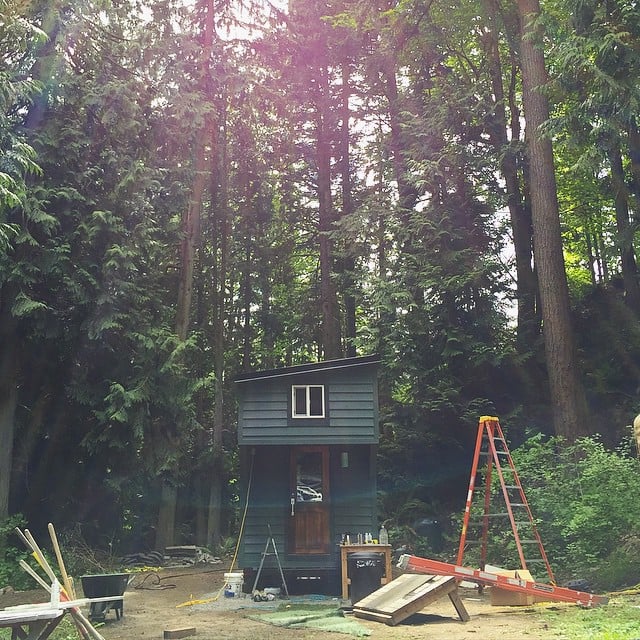
In recent years, green design and sustainable living communities have become obsessed with tiny homes [4] and small dwelling places.
There are scores of blogs and forums dedicated to sharing interesting designs as well as building plans. Countless gallery posts feature stunning images of these adorable abodes, showing us their pristine interiors and smart exteriors. But as my colleague Anna Brones recently asked in a column for EcoSalon, is this obsession with tiny houses more than skin deep?
Watch This!
Pop Quiz
The Cast of I Know What You Did Last Summer Play a Scary Game of Would You Rather
"Our connection to minimalist living [5] has gone haywire, in which small spaces are idealized but no one has them, and shabby chic makes the well-off yearn for a second (or third) home (it's OK because it's small!) that someone in a different socio-economic status would be happy to call their primary address."
In short, we all like looking at tiny-house designs, but they only matter if we embrace the philosophy behind them. So instead of trying to inspire you with pictures, I decided to reach out to some individuals and families who actually live in tiny homes. Their experiences reveal the oft-untold story of small living: what it's actually like to live in just a few hundred square feet, with even fewer belongings. Although there are definitely challenges, most tiny house owners say they're far outweighed by the physical, mental, and financial benefits.
Meet the Tiny-House Dwellers:
Lilah — she and her partner built this amazing tiny house made of recycled windows [6] in the hills of West Virginia.
Corinne — she built her tiny home in Vancouver, British Columbia, Canada [7], because she needed a place to heal from chronic fatigue syndrome.
Greg — he created his tiny house in Durango, CO [8], to ditch his costly bills and gain the flexibility to live wherever he wants.
Jamie — she built a tiny house in Calais, VT [9], because the thought of living under a huge mortgage was too much to bear.
Kelly — she and her partner converted a 1991 Ford Thomas school bus [10] into a tiny house on wheels.
1. Have a Reason Why
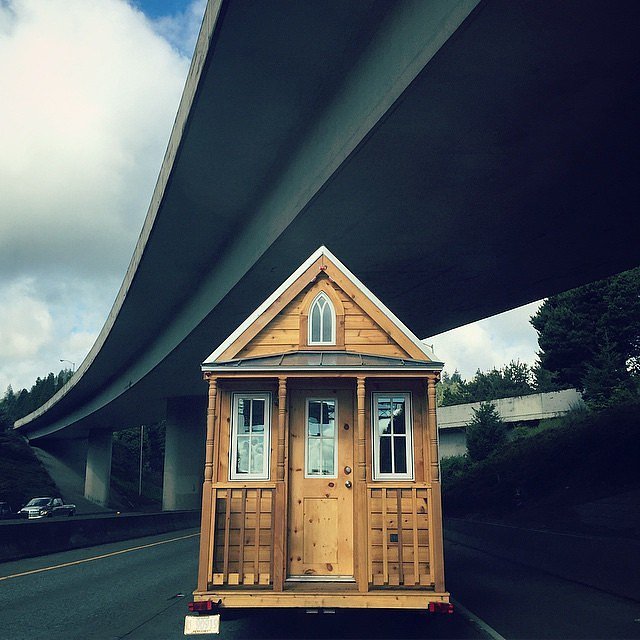
Source: Instagram user thatcodysim [11]
The first thing I learned from this panel of experts is that you should never pursue tiny-house living without a clear reason or inspiration. Because it's cute or trendy doesn't count. In most cases, the process of designing and building a microhome is long and fraught with unexpected difficulties. Each person I interviewed had a single point in time or pressing need that fueled their motivation through the uncertain times.
It could be wanderlust: "I was sick of paying rent and wanted something I could live in for a few years and abandon if I decided I wanted to do something drastically different with my life. I travel a lot and thus wanted something I could just leave," explained Jamie.
It could be the desire to stop consuming: "When you have too much space you end up with too much unwanted stuff! Small homes make you own only the most important things you love," says Lilah.
It could be a quest for freedom: "Living simply, having no mortgage, very little bills, [and the] flexibility of being able to move it," says Greg.
It could be the need to stay alive: "I wanted a house free of toxic chemicals in which I could heal from chronic fatigue syndrome," says Corinne. "Since I could not afford to buy land, this was my best option."
It could be a need for financial independence: "We decided to start our tiny-living adventure to find a way to save some money," says Kelly. "Along the way, we discovered that our new home provides us with not only financial stability but also great satisfaction and happiness."
2. It's Not All Photo Shoots and Unicorns
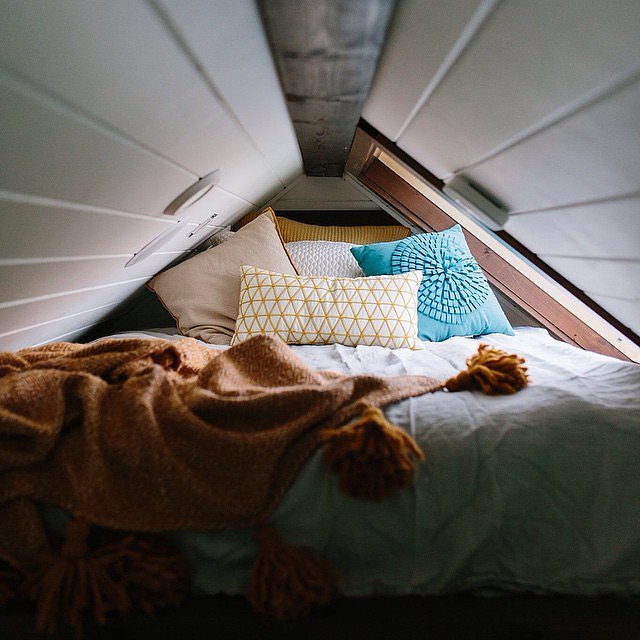
Source: Instagram user tinyheirloom [12]
Why is it that we (almost) never see people in images of tiny houses? And why is it that they always seem pristine, with everything in their right place? This isn't what small living is really like, explained our panel. To thrive in a tiny house, you've got to be ready to do the work.
"Tiny homes get messy just as quickly," Kelly points out. "With just a few items on our table and counter tops, the bus immediately begins to feel cluttered and disheveled. Not to mention, we can't afford to use valuable tabletop space to store anything, as this is the space where we eat, use our computers, play games, and fold laundry. We had to develop a regular routine of picking up and putting away in order to avoid the anxiety and discomfort that comes from living in a messy space. Though this wasn't impossible, it was definitely a challenge from the beginning."
You'll also have to adjust your expectations for hobbies and socialization," explains Corinne. "The biggest challenge is not having space for guests. For me this is not a two-person house in any capacity. I need my quiet and space, so having another person here is not possible."
"There are a few functions I like to do year round that are difficult to do in the Winter when the weather forces me indoors, i.e. doing yoga, entertaining guests, etc. Sometimes I wish I had an extra room for these functions," agrees Greg.
3. Get Ready to Feel Blessed
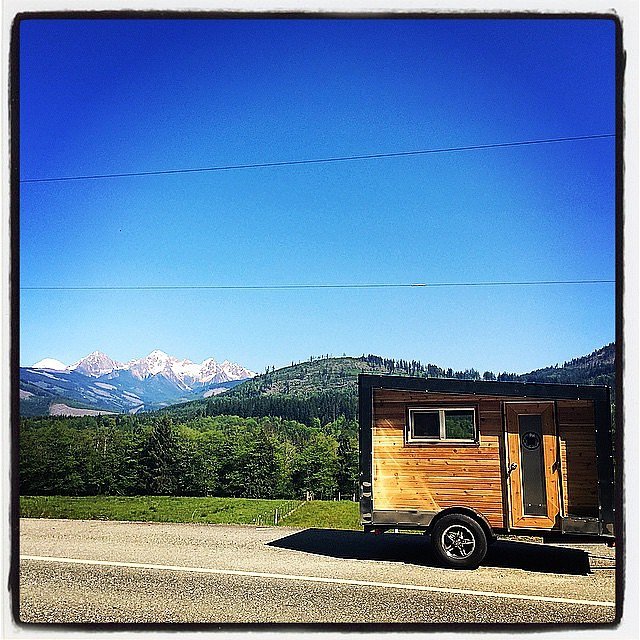
Source: Instagram user thedrifthouse [13]
By now you might be thinking, "This sounds hard. I don't know if I can give up dinner parties and family gatherings." But before you resign yourself to all the trappings of a big house life, realize that there's a flip side to these challenges: the blessings.
For Corinne, the biggest blessing (besides being able to live chemical free) is less stress. "I sorted out all the boxes that I had been lugging around for years, scanned all my photos and documents, and got down to the bare essentials. It is much less stressful to live a minimalist life for me, and there were so many things I would never had really sorted through if it weren't for this house."
Clarity and contentment follow Kelly and her partner wherever their bus takes them. "Everyone lives somewhere, but typically where you live is not really part of your identity. When you live in a tiny home (or school bus) it becomes part of who you are. Since our home was built by us and specifically for us, it has a more meaningful place in our lives," she explained.
Greg has been able to slow down, really taking the time to "taste and see" the natural beauty all around him. "By living tiny, you are able to absorb and appreciate your surroundings more so than in a large house," he reflected. "If you've ever read A Sand County Almanac, you learn how Leopold was very observant of his Wisconsin land. He would notice the little things like when certain species of birds came and went. When certain perennials began to bloom. How the animals used the land. I'm blessed to live in a very beautiful place where I too notice such subtleties, and I appreciate them in a manner that I never did before."
You might also be surprised to learn that stronger relationships are also a blessing of a microhome. "You spend more time with your partner (co-inhabitor)," Lilah explained, and without the distractions of all the space and stuff that makes up a big home, it's more meaningful interaction.
4. How to Prepare
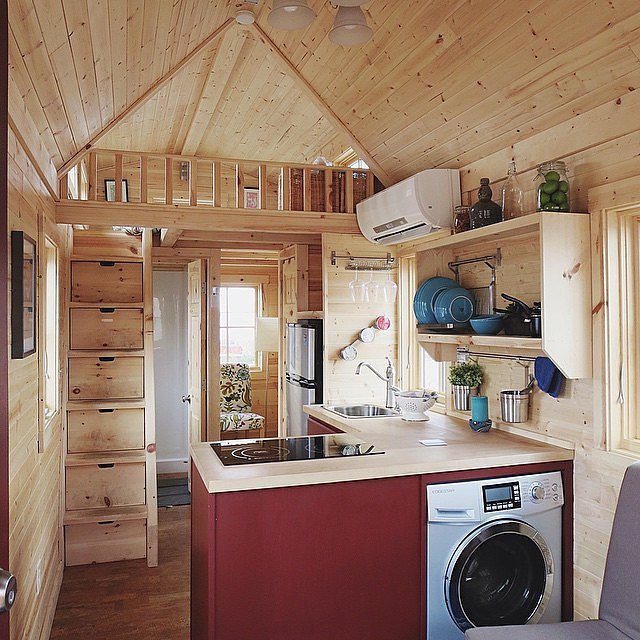
Source: Instagram user annanewelljones [14]
If you're serious about downsizing your life and swapping your big house for a tiny one, it's necessary to make some mental and physical preparations.
"Study the way you use your space and write down what you actually need," Corinne advises. "Also consider closely the costs and the decline in value over time, to see if it is really a better financial option than buying a small house."
"No matter how space efficient you are, you simply cannot bring everything with you, and you will have to get rid of something that you think you might possibly need or use, Kelly admits. "If you're not willing to acknowledge that you don't need everything you have right now, then you're not ready to live in a tiny space."
5. Do Your Homework
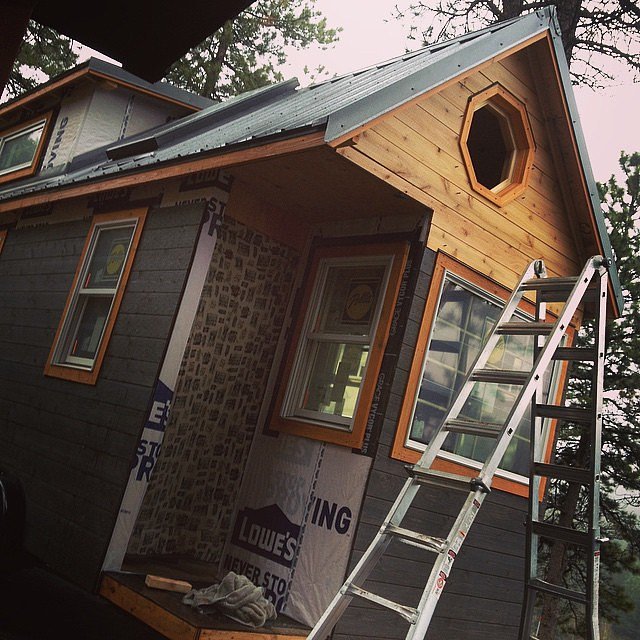
Source: Instagram user frontrangeflyer [15]
I asked our tiny-house experts to share the resources that were most helpful during on their journey. Here's what they said:
The Humanure Handbook [16]: This book "is fabulous, entertaining, and a must read for designing a nontraditional composting system. [It] really helped me design and build my own system, eventually based off the general model of the 'Lovable Loo,'" Jamie said.
Corinne says the book Little House on a Big Planet [17] helped her study and map her spatial needs, while Prescriptions For a Healthy House [18] guided her chemical-free build.
"Read Lina Minard's account of completing the 200-Thing Challenge [19]," says Greg, "and check out Radical Simplicity [20] by Dan Price." As an expert, Greg is also available to answer questions via his website [21].
According to Kelly, some of the best advice and assistance can be found on the Internet. She suggests taking a look at Tiny House Swoon [22] (for lots of pictures and inspiration), seeking out online tiny-house communities and forums (to create relationships with like-minded people), and starting a personal blog or Facebook page for your tiny-house dream. "By posting on our blog and Facebook page, we received regular support and assistance while building the bus. This helped motivate us to keep working, even during some significantly challenging times," Kelly said.